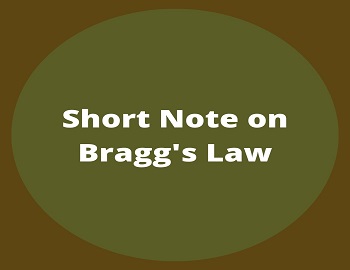What is Ohm’s Law?
Ohm’s law states that at constant temperature potential difference across a conductor is proportional to the current in it.

Now we have understood that potential difference across a conductor causes a current in the conductor. In 1826 scientist Ohm found a relationship between a potential difference and current. He observed the current in the conductor increases linearly with the potential difference across it. At a given temperature for a given conductor, the ratio of potential difference and the current is always constant and is called the resistance of the conductor.
If V is the potential difference across the conductor and I is the current in it then from Ohm’s law-
| V ∝ I V = RI ……….(i) |
Here R is the constant of proportionality and is called the resistance of the conductor. Now if I = 1, then V = R. When the current flowing in a conductor is unity its resistance is numerically equal to the potential difference across the conductor.
The SI unit of resistance is the ohm.
| Since, R = V/I = 1 volt/1 amp = 1 ohm |
In other words, a conductor on applying the potential difference of 1 volt carried 1 ampere current has resistance 1 ohm.
Normally ‘ohm’ is denoted by the symbol Ω. The dimensions of the ohm are found as-

Experimental Verification & Limitations of Ohm’s Law:
Ohm’s law can be verified by a simple experimental setup as shown in Figure (a). A cell of emf E volt is connected to the end terminals of a rheostat through a key. A conductor of resistance R with an ammeter (A) in series is connected to one end terminal B and the sliding terminal C of the rheostat. The total potential difference between end terminals of rheostat (D and B) is equal to E volt. As the sliding terminal C is shifted from end B to end D, the potential difference between C and B increases from zero to E volt, C at higher (positive) potential compared to B which is connected to the negative terminal of the cell. Thus, the rheostat is used as a potential divider. As C is shifted from B to D, the potential difference V applied across the conductor is increased from zero up to a maximum E when C coincides with D. This applied potential difference V is measured by a voltmeter (V) connected between terminals B and C. Due to the potential difference V across the conductor, current I is driven through the conductor, which is measured by ammeter A.

When C is coinciding with B, the applied potential difference V is zero, and current I through a conductor is also found to be zero. We shift terminal C towards the other end D in steps. At every step, we measure the corresponding values of V and I.
Now we plot a graph between V and I as shown in Figure (b). We get a straight line which proves the linear relation between V and I, i.e.,
| V ∝ I |

This verifies Ohm’s law. We find the slope of the line by choosing any two points A and B on the straight line. The differences in potential and current between these two points are found in the graph as dV and dI. The line is inclined to V-axis at angle θ. Thus the slope of the line is found as
| tan θ = dI/dV ……….(ii) |
Differentiating equation (i), we get
| dV/dI = R ……….(iii) |
Thus the inverse slope of the line is found to be equal to the resistance of the conductor, i.e.
| R = 1/tanθ ……….(iv) |
The experiment is repeated with different conductors. A low-resistance conductor gets a straight line with a high slope and vice versa as shown in Figure (c).

Almost all metal conductors of fixed size and shape exhibit a straight line graph between V and I, i.e., they follow Ohm’s law having constant resistance. These are called ohmic resistors. However, there are certain devices that do not show a linear relation between V and I. These are called non-linear or non-ohmic devices.
Even for metal conductors Ohm’s law has its own limitations. We know that the resistance of a conductor increases with increments in its temperature. Thus, the resistance of a conductor varies to a good extent as the temperature of the atmosphere varies. Also, the constant flow of current through a conductor for an appreciable time heats up the conductor, and thus with an increment in temperature, the resistance increases, i.e., the resistance does not remain constant. (Note that basic Ohm’s law statement has an extra clause ‘physical conditions remaining same’.)
Due to this limitation, one can not derive a proper definition for potential differences across a conductor by using Ohm’s law.









Comments (No)